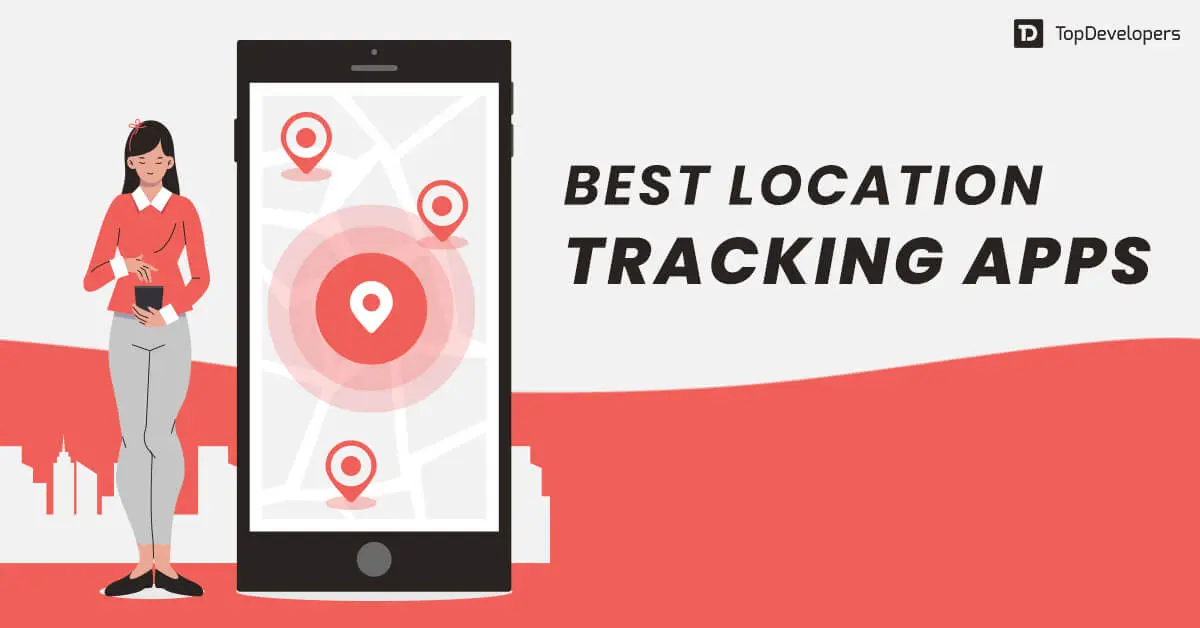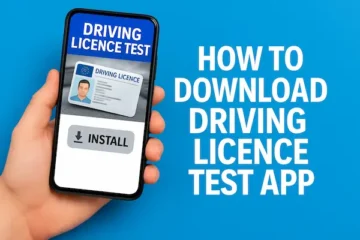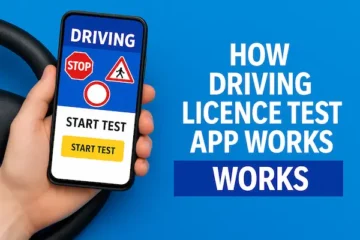The Best cell phone Tracking Apps
The best cell phone tracking apps offer reliable solutions that ensure users can monitor real-time locations, set safe zones, and receive alerts in case of emergencies. These applications are designed not only for personal use but also for businesses that prioritize the safety and productivity of their employees.
Today’s market features a range of tracking apps, each with unique features to suit different needs. Whether it’s for keeping tabs on children, ensuring the safety of elderly family members, or managing fleet vehicles, there is a tool designed for every situation. Users can choose from free options to comprehensive paid services, all aimed at enhancing security and peace of mind.
As privacy concerns mount, opting for a trustworthy tracking app becomes crucial. Many applications prioritize user consent and data protection, making it easier for individuals to feel secure while utilizing these services. Understanding the differences among them can significantly aid in finding the right match for specific needs.
Understanding Cell Phone Tracking Apps Technology
Cell phone tracking technology relies on various methods to determine the location of a device. By using different systems and signals, it can provide accurate positioning information. The following subsections explore key technologies involved in this process.
GPS Tracking Fundamentals
GPS (Global Positioning System) is a satellite-based navigation system that enables precise location tracking. It consists of a network of satellites that transmit signals to GPS-enabled devices.
A device calculates its position by interpreting the signals from at least four satellites. It determines longitude, latitude, and altitude.
Key Features:
- Accuracy: Typically within 5-10 meters.
- Availability: Operates globally, irrespective of weather conditions.
- Battery Usage: Continuous GPS tracking can drain battery life.
Network-Based Location Services
Network-based tracking uses cellular networks to determine device location. It relies on triangulating signals from cell towers to identify where a device is located.
Cell phones communicate with multiple towers, and by measuring signal strength, they estimate the distance from each one. This method can be effective even without direct visibility to satellites.
Advantages include:
- Works indoors where GPS may fail.
- Useful in urban areas with tall buildings.
- Faster response time compared to GPS.
Wi-Fi and Bluetooth Positioning
Wi-Fi and Bluetooth technology also assist in tracking devices, especially indoors. Wi-Fi positioning leverages the locations of nearby Wi-Fi access points to determine a device’s position.
By analyzing the strength of signals from various Wi-Fi sources, it can provide more precise positioning than traditional methods.
Bluetooth tracking works similarly, using small beacons to determine proximity.
Important Points:
- Ideal for indoor environments.
- Lower energy consumption compared to GPS.
- Can provide location accuracy within 1-3 meters.
Hybrid Tracking Systems
Hybrid systems merge different tracking technologies to enhance accuracy and reliability. By combining GPS, network-based, and Wi-Fi positioning, these systems can adapt to various environments and conditions.
This multi-faceted approach ensures that users benefit from the strengths of each individual method. For instance, a device might switch to Wi-Fi tracking in urban areas and use GPS outdoors.
Benefits include:
- Improved overall accuracy.
- Increased reliability under diverse conditions.
- Enhanced battery management due to dynamic switching.
Each of these technologies plays a crucial role in the efficiency and capability of modern cell phone tracking applications, allowing for better user experiences and enhanced functionalities.
Features of Top Cell Phone Tracking Apps
Cell phone tracking apps offer various features that enhance user experience and safety.

Understanding these features helps in selecting the right app for individual needs. Key elements include real-time location sharing, historical location data, geofencing capabilities, and emergency services integration.
Real-Time Location Sharing
Real-time location sharing allows users to monitor the exact whereabouts of a device at any moment. This feature is particularly beneficial for parents keeping tabs on their children’s location.
- Live Updates: Users receive notifications when the tracked device moves, ensuring they are always informed.
- Map Integration: Most apps provide map interfaces that visually represent the device’s location.
- Privacy Controls: Users can customize sharing settings, deciding who can view their location and for how long.
Historical Location Data
Historical location data helps users track the movements of a device over a specified period. This is useful for those wanting to review past locations for safety or investigative purposes.
- Time Stamps: Each location update is recorded with a timestamp to indicate when the device was at a specific place.
- Journey Reports: Some apps offer detailed reports or visualizations, showcasing the routes taken over time.
- Geo-Tagging: Users can see if the device visited specific locations, making it easier to understand travel patterns.
Geofencing Capabilities
Geofencing creates virtual boundaries that trigger alerts when the tracked device enters or exits designated areas. This feature enhances safety and can be customized for various uses.
- Custom Zones: Users can set up specific locations, such as schools or home addresses, to monitor activity.
- Notifications: Immediate alerts notify users when a device crosses these boundaries, enhancing situational awareness.
- Usage Scenarios: Useful for parents to ensure children stay within safe areas or businesses to monitor company vehicles.
Emergency Services Integration
Integration with emergency services is pivotal in critical situations. Some tracking apps can directly connect users with authorities if a situation arises.
- Panic Button: Many apps include a panic feature, sending alerts to emergency contacts or services quickly.
- Location Sharing: When an emergency call is made, the app can automatically share the user’s location with responders.
- Support Features: Some applications provide additional resources, like local emergency contacts and response strategies.
Security and Privacy Considerations
When evaluating cell phone tracking apps, understanding security and privacy aspects is crucial. Users should be aware of how their data is handled, the permissions required by apps, and compliance with regulations.
Data Encryption Methods
Data encryption is essential for protecting sensitive information collected by tracking apps. It ensures that data transmitted between the device and the app’s server remains confidential.
Many reputable apps utilize advanced encryption standards like AES-256. This level of encryption makes it difficult for unauthorized users to access personal data.
- End-to-End Encryption: Some apps offer end-to-end encryption, ensuring data is secure from the point of capture until it reaches the intended recipient.
Users should verify whether an app employs encryption and review its security protocols. Regular updates and security patches are critical for maintaining data integrity.
User Consent and Permissions
User consent is a fundamental requirement for transparency in tracking apps. Apps should clearly request permission for accessing various data, such as location, contacts, and messages.
It is vital for users to read privacy policies carefully. These documents outline what data is collected and how it is used.
- Granular Permissions: Quality apps provide granular permission settings. Users can choose to allow or deny specific functionalities rather than granting blanket access.
An ethical app ensures that users can withdraw consent at any time, allowing for greater control over personal information.
Regulatory Compliance
Compliance with data protection regulations is another key consideration. Apps must adhere to laws like the General Data Protection Regulation (GDPR) in the European Union or the California Consumer Privacy Act (CCPA).
These regulations are designed to protect user data and privacy rights. Apps that comply often publish their compliance status, reassuring users about data safety.
- Data Breach Protocols: Apps must also have mechanisms in place to handle data breaches. This includes notifying users promptly if their data has been compromised.
Understanding compliance can help users choose apps that prioritize their privacy and security.
Comparing Popular Cell Phone Tracking Apps
When evaluating cell phone tracking apps, important aspects include their subscription models, user interfaces, and customer support services. These factors significantly influence user satisfaction and the overall effectiveness of the apps.
Subscription Models and Pricing
Cell phone tracking apps typically offer various subscription models, which may include monthly, quarterly, or annual billing options. For instance, App A charges $29.99/month with a discount for annual payment, while App B has a flat rate of $19.99/month without options for a longer-term commitment.
Users should also consider family plans, which may be more cost-effective. App C offers a family plan for $59.99/year, allowing tracking for up to five devices. It’s essential to evaluate what features each price point includes, as some lower-cost options may lack critical functionalities, such as real-time tracking or geofencing.
User Interface and Ease of Use
A user-friendly interface enhances the functionality of tracking apps. Many users prefer a clean, intuitive layout that simplifies navigation. For example, App D features a straightforward dashboard that allows users to access all functions with just a few taps.
In contrast, App E has received criticism for its cluttered interface, which can be overwhelming for new users. Additionally, mobile compatibility is crucial; apps that work seamlessly across devices promote a better experience. Testimonials often highlight user experiences, indicating that an easy-to-use app encourages consistent engagement and maximizes tracking effectiveness.
Customer Support and Service
Customer support can significantly impact user experience with tracking apps. Many services provide resources like FAQs, live chat, and email support. App F offers 24/7 customer assistance, which is highly valued by users facing technical issues.
In contrast, App G only operates during regular business hours, which can delay resolution of issues. The availability of comprehensive online tutorials or forums can also enhance user satisfaction. Positive reviews frequently mention responsive customer service as a key factor in their satisfaction with the product.
Selecting the Right App for Your Needs
Choosing the appropriate cell phone tracking app depends on specific requirements. Different users, such as individuals, families, and businesses, have unique goals that influence their selection.
Individual and Family Use Cases
For personal use, tracking apps can offer peace of mind. Parents often choose these apps to monitor their children’s locations and ensure their safety. Features to consider include:
- Real-time Location Sharing: Allows parents to see where their children are at any moment.
- Geofencing: Sends alerts when a child enters or leaves a designated area.
- Panic Button: Offers an emergency option for immediate alerts.
Families may also benefit from location history, which provides insights into frequent places visited. Apps with user-friendly interfaces and compatibility across devices enhance usability for all family members.
Business and Enterprise Solutions
Businesses require tracking apps for various reasons, including asset management and employee safety. Choosing the right app involves evaluating key features:
- Fleet Tracking: Monitors vehicles for route optimization and fuel efficiency.
- Employee Monitoring: Helps ensure that employees are safe while working remotely or in the field.
- Data Analytics: Offers insights to improve operational efficiency and reduce costs.
Security and compliance features are essential for protecting sensitive company data. Customizable solutions that cater to specific business needs enhance effectiveness and ensure that the app integrates smoothly with existing systems.






